From the Archive: Americans feel a special sadness about the terrible loss of life on Sept. 11, 2001, but the 9/11 date has other meanings in other countries, reflecting a U.S. hypocrisy on terrorism, wrote Jonathan Marshall in 2014.
By Jonathan Marshall (Originally published on Sept. 10, 2014)
Americans collectively woke up to the threat of domestic terrorism on the morning of Sept.11, 2001. Nearly 3,000 people died in the fiery destruction of the Twin Towers in New York City, the attack on the Pentagon and related airplane hijackings.
Twenty-eight years earlier, Chileans had their own deadly wake-up call on Sept. 11, 1973, when coup plotters overthrew the democratic government of Salvador Allende after blasting the presidential palace with bombs and heavy artillery. The military junta went on to kill more than 3,000 people, imprison and torture tens of thousands of political victims, and send tens of thousands more into exile.
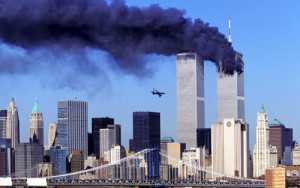
The second plane about to crash into the World Trade Center towers in New York City on Sept. 11, 2001.
Though largely forgotten today, blowback from the U.S.-backed Chilean coup came to haunt North Americans in the form of deadly terrorist attacks, including a number falling in September and even on the forbidding date of Sept. 11 in years predating the al-Qaeda atrocity. In those cases, the perpetrators were not Islamic militants, nor were they angry Marxists intent on avenging Washington’s complicity in the Chilean military’s crimes. Instead, the killers were right-wing extremists bent on carrying their cause to U.S. soil.
The most shocking such case of blowback terrorism was the car bombing of former Chilean government minister Orlando Letelier and a young colleague on the streets of Washington D.C. on Sept. 26, 1976, just past the third anniversary of the coup.
Until 2001, it was the worst act of international terrorism committed in the United States. FBI investigators eventually determined that the remote-controlled bomb had been set off by members of the fascist Cuban Nationalist Movement (CNM), directed by an American-born agent of the Chilean secret police.
Attacks at the UN
Few Americans remember the Letelier murder, but how many ever knew of the related creation of one of America’s longest-running terrorist organizations on Sept. 11, 1974? How many know of that group’s brazen murder of a Cuban diplomat, the first case of terrorist violence against a United Nations diplomat, on the streets of New York on Sept. 11, 1980? Or of the same group’s coordinated attacks against the Mexican consulates in New York City and Miami, and the Miami office of a noted magazine, all on Sept. 11, 1981?
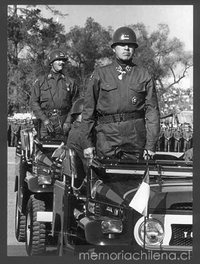
Chile’s Gen. Augusto Pinochet, who seized power in a U.S.-backed coup in 1973 and helped create Operation Condor, a campaign of assassinations across Latin America and even into the United States. Pinochet died in 2006.
The terror group’s name was Omega 7. Its founder was a fanatical anti-Castro Cuban exile named Eduardo Arocena, who used the nom-de-guerre “Omar” to take credit for the group’s two assassinations and more than 30 bombings over a span of almost nine years as the group eluded police and FBI investigators.
One Justice Department official called Arocena “probably the most dedicated patriot in the Cuban field that the law enforcement community has ever experienced in seven years of bombings and murders.” (Imagine a U.S. official calling Osama Bin Laden “the most dedicated patriot in the Islamist field that the law enforcement community has ever experienced.”)
As the FBI reported in 1993, “The main areas of operation for the Omega 7 were the New York, New Jersey, and Miami, Florida, areas. Its primary targets were representatives of the Cuban Government or any individual, organization, facility, or business that dealt with or supported in any way, the communist government of Fidel Castro.
“The majority of Omega 7 attacks were bombings, shootings, and assassinations. Its terrorist attacks were usually well-planned and flawlessly executed. Many of the Omega 7 members were veterans of the Bay of Pigs invasion who were trained in demolition, intelligence, and commando techniques. Their expertise, combined with the financial resources available to them through the exiled Cuban community, gave the Omega 7 an almost unlimited potential for terrorist activity.”
Not a Stereotype
Short and pudgy, with a fondness for three-piece suits and classical music, Arocena did not fit any usual stereotype of a terrorist mastermind, but he committed his adult life to violence. “I am obsessed by Communism, which has held my country prisoner,” he explained years later.
Arocena was born in Cuba in 1943. He left school when Fidel Castro took power in 1959. After a stint loading sugar at his hometown port of Caibarien, followed by national success as a welter-weight wrestler, Arocena secretly began fighting Communism. As he would testify years later, he joined a clandestine group to “burn cane fields, burn down industrial development places, to keep our eyes on the regime. . . . We carried out intelligence work, which [was] then passed on to foreign agencies.”
Fearing capture, he stowed away on a ship bound for Morocco in 1965 and made his way to New Jersey the next year. Safe on American soil, he quickly found that his passion for fighting Castro was shared by tens of thousands of fellow exiles and at least some Washington officials. In early 1969, with hundreds of compatriots, he received training by unnamed “American agents” in demolitions techniques at camp in the Florida Everglades. To his bitter regret, the group was disbanded after the promised invasion of Cuba came to nothing.
Eager for action, he grew close to members of the radical CNM, founded by the fascist ideologue Felipe Rivero in 1960. After joining the CIA’s ill-fated landing at the Bay of Pigs in 1961, Rivero went his own way. In 1964 he called for a worldwide campaign of terrorism against Cuban targets, which the group initiated with a bazooka attack against the United Nations building, where Ernesto “Che” Guevara was giving a speech. Years later, the CNM was among the first and most ardent anti-Castro Cuban groups to ally with the Chilean military regime and its secret police after the Sept. 11, 1973 coup.
Founding a Terror Cell
Celebration of the Chilean coup likely explains Arocena’s decision to found his own terrorist group, Omega 7, on its one-year anniversary. Omega 7 drew support from the CNM to the point where authorities for many years believed, incorrectly, that the two organizations were identical.
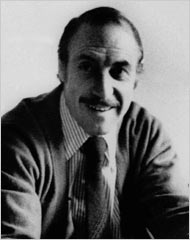
Chilean diplomat Orlando Letelier, who was murdered along with co-worker Ronni Moffitt, when right-wing terrorists blew up his car in Washington, D.C., on Sept. 26, 1973.
Omega 7 committed its first act of terrorism on Feb. 1, 1975, setting off a bomb at the Venezuelan consulate on 51st Street in New York City to protest that government’s recent resumption of diplomatic relations with Cuba. In June 1976, it set off a bomb at the Cuban Mission to the United Nations.
Then, on Sept. 16, 1976, the group bombed a Soviet cargo ship docked in Port Elizabeth, New Jersey, where Arocena worked as a longshoreman. Arocena himself swam out to plant the bomb on the ship’s hull with magnets. He built the device with help from the CNM’s Chilean-trained demolition expert Virgilio Paz. Only days later, Paz would travel from Union City to Washington to help carry out the Chilean regime’s plot to assassinate Orlando Letelier. The Omega 7 job explains why the Chilean agent in charge of the Letelier mission would report that his assignment had to wait several days because “the CNM was engaged in some other operation which required their immediate attention.”
Many other acts of terror would follow. One day after Christmas in 1977, Omega 7 bombed the Venezuelan Mission to the United Nations, to protest Venezuela’s imprisonment of Cuban exile Orlando Bosch on charges of blowing up 73 passengers aboard a Cubana Airlines jet the previous year. The next year, Omega 7 bombed the Cuban Mission to the U.N. for the third and fourth times, the Mexican Consulate in New York, and Avery Fisher Hall in Lincoln Center, to protest a performance by a Cuban orchestra.
In 1979, among other attacks, it bombed the Cuban Mission a fifth and sixth time (injuring two policemen), set off high explosives at the Soviet Mission to the U.N. (injuring four policemen and two mission employees), tried to assassinate Fidel Castro during his visit to the U.N. General Assembly in October, and murdered moderate exile Eulalio Jose Negrin in front of his son with a silenced MAC-10 machine gun to punish his “traitorous” parlays with Havana that led to the release of 3,000 political prisoners. The group also tried to plant a suitcase bomb on a TWA flight from New York to Los Angeles, but it exploded prematurely before being loaded.
Hard to Crack
With the attack on the Soviet mission, the FBI finally moved Omega 7 to its highest priority target list. The tight-knit organization proved impossible to crack, however. In March 1980, only a fluke accident saved Cuba’s ambassador to the United Nations from being incinerated when his car bumped another and a powerful remote-controlled bomb fell off its gas tank to the ground. Arocena had built the bomb using military-grade explosives supplied to the CNM by the Chilean secret police.
An attache with the Cuban Mission, Felix Garcia, was not so lucky. On Sept. 11, 1980, the seventh anniversary of the Chilean coup and the sixth anniversary of Omega 7’s founding, the group murdered him while he was driving to work from his apartment in Queens. Arocena’s partner Pedro Remon cut Garcia down with a burst from a MAC-10. Arocena drove the hit car.
As the Cuban newspaper Granma described the reaction, “UN diplomats were in uproar. For the first time ever, terrorists had used violence against the legitimate representative of a UN member country. . . . Three times on the following day, UN Secretary General Kurt Waldheim expressed his horror at the crime. He communicated with the U.S. representative at the United Nations, demanding that full measures be taken to guarantee the safety of all the Cuban personnel in New York, and insisted that the tragic event be thoroughly investigated. . . .
“Secretary of State Ed Muskie called it a reprehensible act and asked for all the relevant federal agencies as well as the New York police department to cooperate in the investigation. . . . Donald McHenry, Washington’s ambassador to the UN called the crime a blot on the United States. Nevertheless, both Muskie and McHenry refrained from specifically condemning the anti-Cuban terrorism . . .
“At the UN, Cuban ambassador Raul Roa Kouri affirmed with total clarity: ‘these groups of professional killers have various locations in the country that hosts our international organization. Their members and leaders make public statements to New York’s Spanish-language press and hold public meetings on the streets, crudely boasting of their criminal intentions.’”
The Unraveling
The Sept. 11, 1980 murder of Cuba’s diplomat began the undoing of Omega 7. A joint FBI-New York Police Department terrorism task force eventually tracked a rental car ticketed across from the Cuban Mission that day to Arocena. Toll records also connected Arocena in the period of the murder to his key compatriots in Omega 7, giving investigators their first clear glimpse of the organization’s membership.
Omega 7 was far from spent, however. One year after its assassination of Garcia, the organization unleashed a wave of new attacks. On Sept. 11, 1981, it fire-bombed the Miami offices of Replica magazine, which had called for normalizing relations between Havana and Washington. It also bombed the Mexican consulates in Miami and New York that day to protest that government’s warm relations with Cuba, causing more than $2 million in damage to the Miami building alone.
Where did Omega 7 get the resources to pull off so many meticulous operations? An FBI report in 1993 noted: “Although current information is incomplete, it appears that some Cuban exile businessmen in the Union City, New Jersey, area clandestinely funded Omega 7 and other Cuban anti-Castro groups. The businessmen established a network which would collect money in the form of ‘taxes’ from all segments of the Cuban community who were able to contribute and then divide the money between the various groups they supported. . . . Current reporting, although fragmented, suggests that the businessmen, who may still be active in funding anti-Castro groups, were involved in the flow of over $100,000 to the various groups.”
Additionally, the FBI learned that Arocena and Omega 7 received about $150,000 from a major marijuana trafficker who asked the organization to collect money owed him by other Cuban exiles and business associates in the drug trade. (Arocena agreed to murder one such associate who had stolen 40,000 pounds of marijuana, but dropped the assignment when he learned that his target was in jail.) Omega 7 members also received legal defense funds from at least two drug-connected Cuban exiles.
A grand jury investigation of Omega 7 from 1979 to 1982 went nowhere, but an ideological split in Omega 7’s ranks finally gave the FBI a huge break. Fearing for his life at the hands of Pedro Remón and other disaffected associates, Arocena began talking with surprising candor to Special Agent Larry Wack about the history and operations of the organization. Arocena then went underground in Miami but continued their dialog through calls from pay phones. Their talks,all recorded,built an impeccable case against the man who called himself “Omar” and his terrorist associates.
Belated Roundup
On Oct. 2, 1982, federal agents finally arrested three key members of Omega 7 in New Jersey and Arocena’s chief triggerman turned nemesis, Remón, in Miami. They were charged with transporting explosives used in the attempted assassination of the Cuban ambassador in March 1980.
Not until July 22, 1983, was Arocena finally arrested in Miami, with an arsenal of machine guns, pistols, rifles, knives, disguises, and a remote-control transmitter. A jury would find him guilty the following year on 25 charges of murder, conspiracy to murder, transporting explosives, possession of bombs and perjury. He received a sentence of life plus 35 additional years. A year later, a Miami judge added another 20 years to his sentence after a separate conviction for bombing seven businesses and consulates in that city from 1979 to 1983.
Arocena’s sentence was a rare exception to the mild fate of most Cuban exile terrorists. The Miami Herald’s Juan Tamayo noted in 1998, “Amid reports that Cuban exile leaders financed bombings in Havana, conspirators, cops and prosecutors agree that anti-Castro plotting in South Florida is not only common but almost tolerated.”
“Other than an occasional federal gun charge,” two reporters for Salon observed in 2008, “Nothing much seems to happen to most of these would-be revolutionaries. They are allowed to train nearly unimpeded despite making explicit plans to violate the 70-year-old U.S. Neutrality Act and overthrow a sovereign country’s government. Though separate anti-terror laws passed in 1994 and 1996 would seem to apply directly to their activities, no one has ever been charged for anti-Cuban terrorism under those laws. And 9/11 [2001] seems to have changed nothing. . . .
“The federal government has even failed to extradite to other countries militants who are credibly accused of acts of murder. Among the most notorious is Luis Posada Carriles, wanted for bombing a Cuban jet in 1976 and Havana hotels in 1997. It is, perhaps, a testament to the power of South Florida’s crucial Cuban-American voting bloc — and the political allegiances of the current president [George W. Bush].”
Fitting this mold was the fate of Arocena’s chief partner in crime, Remon, who pleaded guilty and received a sentence of only 10 years (less than many Guantanamo inmates have served without a conviction). After his release, he teamed up with Posada, who had been trained in demolition by the CIA and carried on its payroll for many years.
Despite evidence of his role in the 1976 Cubana Airlines bombing and his admitted campaign to bomb hotels and restaurants in Cuba in 1997, Posada told a New York Times reporter in 1998 that American authorities never attempted to question him. “As you can see,” he said, “the F.B.I. and the C.I.A. don’t bother me, and I am neutral with them.”
Tolerating Foreign Attacks
Why did Posada fare so much better than Arocena? His close connection to the CIA undoubtedly helped. Just as important, he played by the rules, terrorizing Cuba from abroad, not at home. The FBI’s Larry Wack explained to Arocena that his only crime was committing terrorism inside the United States:
“Whatever you people have going outside the United States in Communist countries, we decided amongst us a long time ago that you were not going to tell us about it. And we were not gonna push the issue because it did not concern any, anything inside the United States. . . . Because that is out of our jurisdiction, we told you we were not going to try to interfere with anything that you guys were doing out of the country, and we have stuck to that.”
Wack’s view of official U.S. policy was confirmed just a few years after Panamanian police arrested Posada, along with Omega 7’s Pedro Remon and the CNM’s Guillermo Novo, in 2000 for plotting to assassinate Fidel Castro during a visit to that country. Pardoned in 2004, Remon and Novo returned as free men to the United States, with less hassle than some hapless traveler who ticks off an airport security officer. Posada also returned, and after a battle over his immigration status, not terrorism, he, too, retired to Miami. (Orlando Bosch, now dead, had a street named after him in Miami, where he was treated as a hero.)
As we pause on this 9/11 to remind ourselves of the horrible killing of innocents committed by a gang of extremists 13 years ago, we should reserve some anger for policymakers and law enforcement officers who discredit the cause of justice by ignoring or even protecting other terrorists in our midst depending on their politics. These more obscure bombers and assassins may have called themselves freedom fighters, but their crimes were as evil, and deserve the same punishment, as the mass murders of Sept. 11, 2001.
Jonathan Marshall is author or co-author of five books on international affairs, including The Lebanese Connection: Corruption, Civil War and the International Drug Traffic (Stanford University Press, 2012). Some of his previous articles for Consortiumnews were “Risky Blowback from Russian Sanctions”; “Neocons Want Regime Change in Iran”; “Saudi Cash Wins France’s Favor”; “The Saudis’ Hurt Feelings”; “Saudi Arabia’s Nuclear Bluster”; “The US Hand in the Syrian Mess”; and “Hidden Origins of Syria’s Civil War.” ]

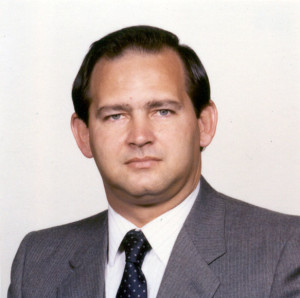
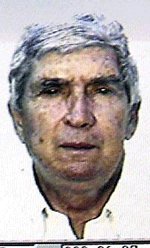
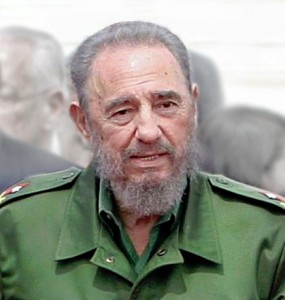
9/11 Memorialized.
9/11 represents a process of the indoctrination of historical lore
Our sacred star spangled banner,as enshrined historical lore,
informs the world that we are a bellicose people (surprised ?)
from the walls of Montezuma to the shores of Tripoli
We will fight destructive wars for our “National Interests”
even if it means the deployment of False Flag Operations
like Paperclip or the Phoenix Program or Co-Intell-Pro.
our delusions of grandeur do not confuse the outside world.
a little bit of history cleanses the mind of fog-of-war delirium.
How we love those “rockets’ red glare/bombs bursting in air!”
How we love big guns, assault rifles/our “right to bear arms!”
Solemn declarations over remembrance of 911 actually are organized ignorance of the American psyche.
All morning I’ve seen the news and the huge self pity that revictimizes us, the dread and helpless loss.
Meanwhile I imagine that it’d be just another Tuesday in Palestine, or Iraq where the new normal is desperately sifting through rubble, deaf from the shock wave seeking body parts of your loved one who wasn’t as fortunate in the bombing.
Any conspiracy theories only disrespect the sacred sadness, we must ignore questions about 911 and what really happened. Bin Laden predicted precisely what we’d do to ourselves, America is done, the nice mask has been removed, naked empire and police state now rule the land of the serfs home of the victims.
After the first few hundred articles and books detailing horrible acts of terror like these, I think that many of us run the risk of incurring “CIA fatigue”. With apologies to Karl Marx, one might say that courageous journalists have only documented the acts of the CIA; but the important thing is to change (or, preferably, abolish) it.